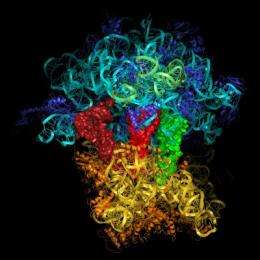A new process for making much-sought iron nanospheres

Using a process that creates bubbles as hot as the surface of the sun, chemists are reporting development of a new method for making hollow hematite (iron oxide) nanospheres. The University of Illinois at Urbana-Champaign's Kenneth S. Suslick and Jin Ho Bang describe the synthesis of these iron nanoparticles in a report scheduled for the Feb. 28 issue of the Journal of the American Chemical Society.
Hollow nanospheres of metals and other inorganic materials are generating great interest because of their unusual properties and potential applications in drug delivery, electronic components, catalysts and other products. "We believe that this procedure will be easily extended to prepare other hollow inorganic materials," the researchers note. In the past, production of hollow hematite nanospheres required a time-consuming process and use of toxic hydrofluoric acid.
The new process uses sonochemistry, in which high-frequency sound waves are focused into a solution containing an iron compound and carbon nanoparticles. Those sound waves create tiny bubbles in the liquid. The collapse of those bubbles causes intense local heating with temperatures estimated at 9,000 F, which is nearly as hot as the surface of the sun.
The sonochemical process forms iron spheres around the carbon nanoparticles. On exposure to air, the iron rapidly oxidizes, which burns away the carbon core, leaving hematite spheres one thousandth the diameter of a red blood cell.
Source: ACS















